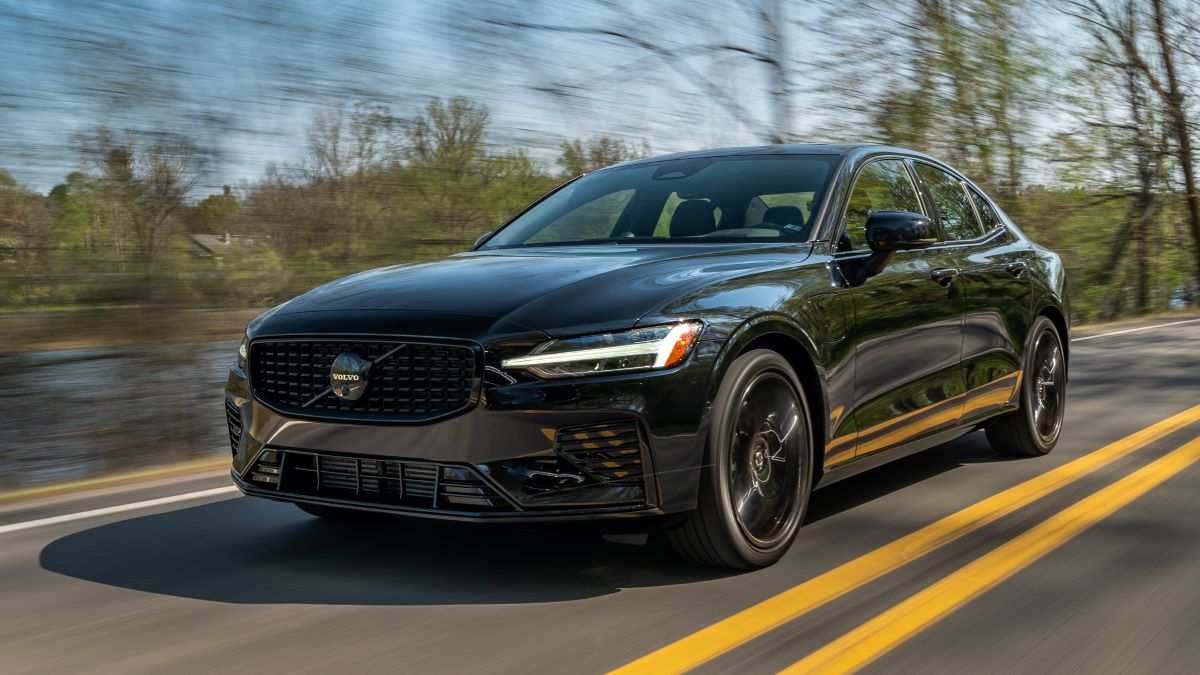The automotive industry presents a fascinating dichotomy when examining vehicle security and theft prevention strategies. While some manufacturers have invested heavily in cutting-edge anti-theft technologies and comprehensive security systems, others have prioritized cost-cutting measures that leave their vehicles vulnerable to increasingly sophisticated theft methods.
This stark contrast became particularly evident in recent years as six of the 10 most stolen cars in 2023 were Kia and Hyundai models that have a security vulnerability revealed by a TikTok trend that showed viewers how to steal certain models in seconds.
The modern automotive security landscape encompasses multiple layers of protection, from traditional mechanical deterrents to advanced electronic immobilizers, GPS tracking systems, and biometric authentication.
Leading manufacturers understand that robust security systems not only protect their customers’ investments but also significantly impact insurance premiums, resale values, and brand reputation.
Kia and Hyundai vehicles experienced the highest theft rates in 2023, breaking the years-long trend of full-size pickups topping the list, highlighting the critical importance of comprehensive security measures in vehicle design.
Security-conscious automotive brands integrate multiple protection layers throughout their vehicles, including engine immobilizers, advanced alarm systems, GPS tracking, remote monitoring capabilities, and sophisticated key fob encryption.
These manufacturers recognize that effective theft prevention requires addressing both opportunistic crimes and organized theft operations that target specific vehicle models for parts or export markets.
The investment in advanced security technology reflects a long-term commitment to customer protection and brand integrity. Conversely, manufacturers with minimal theft prevention focus often rely on basic security measures or omit critical components like engine immobilizers to reduce production costs.
This approach has proven catastrophic for some brands, resulting in dramatic increases in theft rates, expensive recall programs, and significant damage to brand reputation and customer trust in an increasingly security-conscious marketplace.
5 Brands With Top Security Ratings
These security-focused automotive brands have earned prestigious industry recognition for their comprehensive anti-theft technologies and innovative protection systems that consistently outperform industry standards.
Their vehicles feature multi-layered security architectures combining advanced encryption, biometric authentication, real-time tracking, and sophisticated alarm systems that make unauthorized access virtually impossible.
The least likely to be stolen? The Tesla Model 3 electric 4-door, with only two thefts out of 191,000 insured vehicles, demonstrating the effectiveness of integrated security technology.
These manufacturers understand that modern vehicle security requires constant innovation and substantial investment in cutting-edge protection technologies.
Midsize luxury SUVs and electric vehicles have the lowest theft rates and are the hardest cars to steal, largely due to their advanced security implementations.
Their commitment to owner protection extends beyond basic anti-theft measures to include comprehensive tracking systems, automatic emergency response, and over-the-air security updates that continuously strengthen protection against emerging threats throughout the vehicle’s operational lifetime.
1. Tesla
Tesla has revolutionized automotive security by integrating advanced technology, real-time monitoring, and artificial intelligence into a comprehensive protection ecosystem that extends far beyond traditional anti-theft measures.
The company’s approach to vehicle security reflects its broader philosophy of leveraging cutting-edge technology to solve complex problems, creating a multi-layered defense system that makes Tesla vehicles among the most secure on the road today.
The foundation of Tesla’s security architecture lies in its always-connected vehicle platform, which enables continuous monitoring and real-time threat detection capabilities that traditional manufacturers cannot match.
Every Tesla vehicle maintains constant communication with the company’s servers, allowing for immediate notification of unauthorized access attempts, unusual vehicle movement, or security system breaches.
This connectivity enables Tesla to push security updates over-the-air, continuously strengthening protection against emerging threats without requiring service center visits or hardware modifications.
Tesla’s Sentry Mode represents a paradigm shift in automotive security, transforming the vehicle into an intelligent surveillance system that monitors its surroundings even when parked.
The system utilizes the car’s eight external cameras to record potential threats, store footage locally, and alert owners through the mobile application when suspicious activity is detected.
This proactive monitoring capability not only deters theft attempts but also provides valuable evidence for law enforcement investigations, significantly increasing the likelihood of recovering stolen vehicles and prosecuting perpetrators.

The company’s mobile application serves as a comprehensive security command center, providing owners with real-time vehicle status updates, remote monitoring capabilities, and immediate alert notifications.
Owners can track their vehicle’s location, monitor charging status, activate climate control remotely, and receive instant notifications if the security system is triggered.
This level of connectivity and control empowers owners to respond quickly to potential threats and maintain constant awareness of their vehicle’s security status regardless of their physical location.
Tesla’s keyless entry system employs advanced encryption protocols and multi-factor authentication methods that make unauthorized access extremely difficult.
The system utilizes rolling codes and time-sensitive authentication tokens that prevent replay attacks and signal amplification techniques commonly used to steal vehicles with traditional key fobs.
The company regularly updates these security protocols through software updates, ensuring that protection measures evolve alongside emerging threat vectors.
The integration of artificial intelligence and machine learning algorithms enhances Tesla’s security capabilities by enabling the system to distinguish between legitimate activities and potential threats.
The AI analyzes patterns in vehicle usage, identifies unusual behavior, and adapts security responses based on environmental factors and threat assessments. This intelligent approach reduces false alarms while maintaining vigilant protection against genuine security breaches.
Tesla’s comprehensive approach to vehicle recovery includes GPS tracking, cellular connectivity, and cooperation with law enforcement agencies to quickly locate and recover stolen vehicles.
The company’s ability to remotely disable vehicle functions, limit speed, or restrict access to charging networks makes stolen Tesla vehicles nearly impossible to operate effectively, significantly reducing their value to thieves and increasing the likelihood of recovery.
2. BMW
BMW’s commitment to automotive security excellence reflects the company’s broader philosophy of engineering precision and innovative technology integration.
The German manufacturer has developed a comprehensive security ecosystem that combines traditional mechanical protection with advanced electronic systems, biometric authentication, and intelligent monitoring capabilities to create multi-layered protection that addresses diverse theft scenarios and evolving criminal techniques.
The cornerstone of BMW’s security architecture is its advanced engine immobilizer system, which prevents unauthorized engine starts through sophisticated electronic authentication protocols.
Unlike basic immobilizers that rely on simple transponder technology, BMW’s system employs rolling code encryption and multi-stage authentication processes that make bypassing extremely difficult.
The immobilizer integrates with the vehicle’s central computer system, ensuring that multiple vehicle functions remain disabled until proper authentication is confirmed.
BMW’s Intelligent Emergency Call system extends beyond accident response to provide comprehensive security monitoring and theft recovery capabilities.
The system maintains constant communication with BMW’s monitoring centers, enabling real-time vehicle tracking and immediate response to security breaches.
When a theft is detected, the system automatically notifies authorities and provides precise location data, significantly improving recovery rates and reducing the time between theft and recovery.
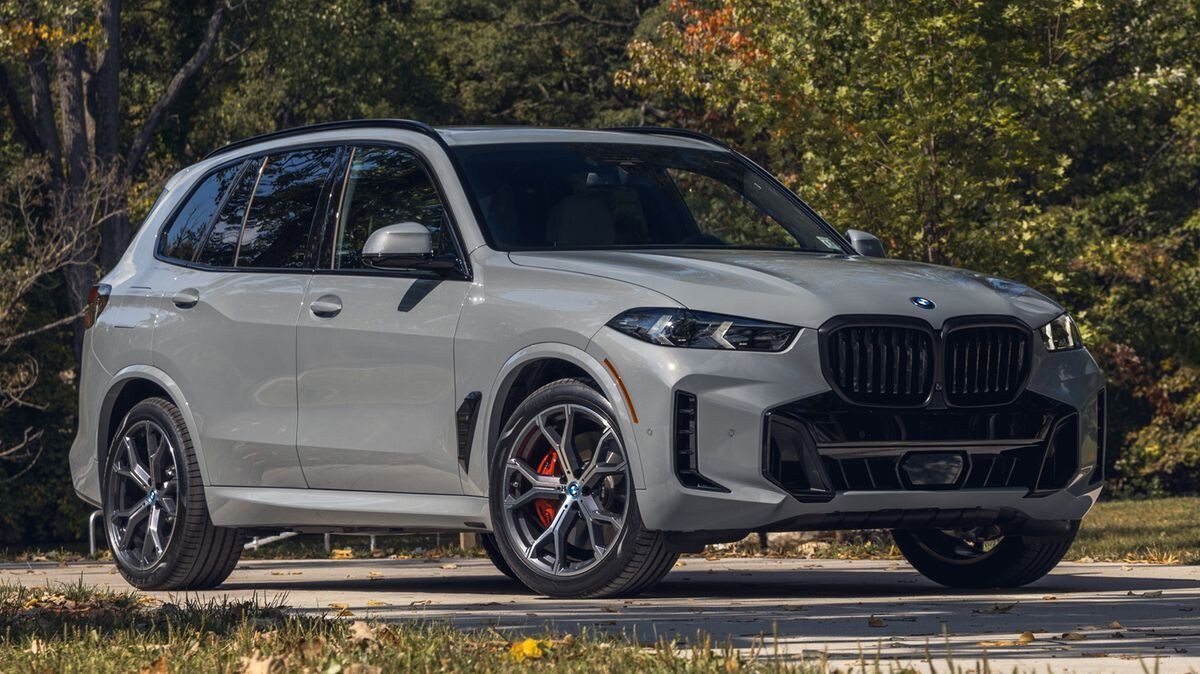
The company’s Connected Drive platform represents a revolutionary approach to automotive security, integrating vehicle monitoring with mobile device connectivity and cloud-based analytics.
Owners receive immediate notifications of security events through smartphone applications, enabling rapid response to potential threats. The platform also provides remote vehicle management capabilities, allowing owners to lock doors, activate alarms, and monitor vehicle status from anywhere in the world.
BMW’s approach to key security incorporates multiple authentication methods, including traditional mechanical keys, electronic transponders, and advanced proximity detection systems.
The company’s latest vehicles feature comfort access systems that use sophisticated signal processing to prevent relay attacks and signal amplification theft methods.
The keys themselves incorporate rolling code technology and time-sensitive authentication protocols that make duplication or unauthorized access extremely challenging.
Physical security measures complement BMW’s electronic systems through reinforced door frames, strengthened locks, and tamper-resistant components that increase the time and effort required for unauthorized access.
The company’s engineers design security features to integrate seamlessly with vehicle aesthetics and functionality, ensuring that protection measures enhance rather than compromise the driving experience.
BMW’s partnership with law enforcement agencies and security organizations enables coordinated response to vehicle theft and provides valuable intelligence about emerging criminal techniques.
The company actively shares threat information and works collaboratively to develop countermeasures against new theft methods, ensuring that security systems remain effective against evolving criminal tactics.
3. Mercedes-Benz
Mercedes-Benz has established itself as a leader in automotive security through decades of innovation in protection technology, intelligent monitoring systems, and comprehensive theft prevention measures.
The company’s security philosophy emphasizes the integration of advanced electronics with traditional mechanical protection, creating a sophisticated defense ecosystem that addresses both opportunistic crimes and organized theft operations targeting luxury vehicles.
The foundation of Mercedes-Benz security lies in its Electronic Stability Program integration with anti-theft systems, creating a comprehensive vehicle management platform that monitors all aspects of vehicle operation and security status.
This integration enables the security system to detect unauthorized access attempts, unusual vehicle movement patterns, and tampering with critical components.
The system’s ability to distinguish between legitimate use and potential theft attempts significantly reduces false alarms while maintaining vigilant protection against genuine threats.
Mercedes-Benz’s KEYLESS-GO system represents a significant advancement in automotive access security, employing sophisticated radio frequency protocols and encryption algorithms that prevent unauthorized access.
The system uses multiple authentication factors, including proximity detection, rolling code verification, and time-sensitive authentication tokens that make unauthorized access extremely difficult. The company regularly updates encryption protocols through software updates, ensuring continued protection against emerging electronic theft methods.


The company’s mbrace connected vehicle platform provides comprehensive remote monitoring and control capabilities that enhance security while offering convenience features.
Owners can track vehicle location in real-time, receive immediate notifications of security events, and remotely control various vehicle functions through smartphone applications.
The platform’s integration with professional monitoring services enables coordinated response to theft attempts and provides law enforcement with critical information for vehicle recovery efforts.
Mercedes-Benz’s approach to physical security incorporates reinforced construction, advanced locking mechanisms, and tamper-resistant components designed to delay unauthorized access and alert owners to breach attempts.
The company’s engineers integrate security features throughout the vehicle structure, creating multiple layers of protection that address different attack vectors. This comprehensive approach ensures that defeating one security measure does not compromise overall vehicle protection.
The company’s theft recovery systems combine GPS tracking with cellular communication and professional monitoring services to provide rapid response capabilities.
When unauthorized access is detected, the system immediately notifies monitoring centers and provides real-time location data to law enforcement agencies.
The integration of vehicle diagnostic information with security monitoring enables detailed analysis of theft methods and continuous improvement of protection measures.
Mercedes-Benz’s commitment to security extends beyond individual vehicle protection to include comprehensive owner education and support services.
The company provides detailed information about security features, optimal usage practices, and threat awareness to help owners maximize their vehicles’ protection capabilities.
This educational approach significantly enhances security effectiveness by ensuring owners understand and properly utilize available protection measures.
4. Audi
Audi’s approach to automotive security exemplifies German engineering precision applied to comprehensive theft protection, creating sophisticated systems that seamlessly integrate advanced technology with practical usability.
The company’s security philosophy emphasizes proactive threat detection, multi-layered protection strategies, and intelligent response capabilities that address the full spectrum of vehicle security challenges facing luxury automobile owners in today’s complex threat environment.
The core of Audi’s security architecture revolves around its advanced immobilizer system, which employs sophisticated electronic authentication protocols that prevent unauthorized engine starts.
Unlike simpler systems that rely on basic transponder technology, Audi’s immobilizer integrates with the vehicle’s central computer network, creating multiple authentication checkpoints that must be satisfied before engine operation is permitted.
This multi-stage verification process makes bypassing the system extremely difficult and time-consuming for potential thieves. Audi Connect represents a revolutionary advancement in connected vehicle security, providing real-time monitoring, remote control capabilities, and comprehensive threat detection through cloud-based analytics and artificial intelligence.
The system maintains constant communication between the vehicle and Audi’s monitoring infrastructure, enabling immediate notification of security breaches and coordinated response to theft attempts.
Owners receive instant alerts through smartphone applications and can track vehicle location, monitor security status, and control various functions remotely.

The company’s Advanced Key system incorporates cutting-edge encryption technology and sophisticated authentication protocols that protect against modern electronic theft methods.
The system uses rolling code technology, time-sensitive authentication tokens, and proximity detection algorithms that prevent relay attacks and signal amplification techniques commonly used by car thieves.
Audi regularly updates these security protocols through over-the-air software updates, ensuring continued protection against emerging electronic threats.
Audi’s integration of security systems with vehicle dynamics and stability control creates a comprehensive monitoring platform that can detect unauthorized movement, tampering attempts, and unusual vehicle behavior patterns.
This integration enables the security system to respond intelligently to different types of threats, adjusting sensitivity levels based on environmental conditions and parking situations.
The system’s ability to learn and adapt to normal usage patterns helps reduce false alarms while maintaining vigilant protection against genuine security breaches.
Physical security measures complement Audi’s electronic systems through reinforced construction, advanced locking mechanisms, and tamper-resistant components designed to delay unauthorized access and provide clear evidence of breach attempts.
The company’s engineers integrate security features throughout the vehicle architecture, ensuring that protection measures are both effective and aesthetically pleasing.
This attention to design detail reflects Audi’s commitment to maintaining luxury vehicle appeal while providing comprehensive security. Audi’s partnership with professional monitoring services and law enforcement agencies enables a coordinated response to vehicle theft and provides valuable intelligence about emerging criminal techniques.
The company actively participates in industry security initiatives and shares threat information to help develop effective countermeasures against new theft methods.
This collaborative approach ensures that Audi’s security systems remain effective against evolving criminal tactics and emerging technological threats.
Also Read: 5 Cars With Digital Locks Hackers Can’t Bypass and 5 With Weak Encryption
5. Volvo
Volvo’s commitment to automotive security reflects the company’s broader safety-first philosophy, creating comprehensive protection systems that prioritize both vehicle security and occupant safety.
The Swedish manufacturer has developed an integrated approach to theft prevention that combines advanced technology with practical design considerations, resulting in security systems that are both highly effective and user-friendly for everyday operation.
The foundation of Volvo’s security approach lies in its comprehensive vehicle monitoring system, which integrates theft detection with the company’s broader safety and connectivity infrastructure.
This integration enables the security system to leverage Volvo’s extensive sensor network, including cameras, radar systems, and motion detectors, to provide comprehensive threat awareness and rapid response capabilities.
The system’s ability to correlate information from multiple sources significantly enhances its effectiveness in detecting and responding to potential security threats.
Volvo’s Personal Car Communicator represents an innovative approach to vehicle security monitoring, providing owners with real-time status updates and immediate notification of security events.
The system uses bidirectional communication to enable owners to monitor vehicle status, receive alerts about potential threats, and confirm security system activation from significant distances. This communication capability ensures that owners remain informed about their vehicle’s security status regardless of their location.
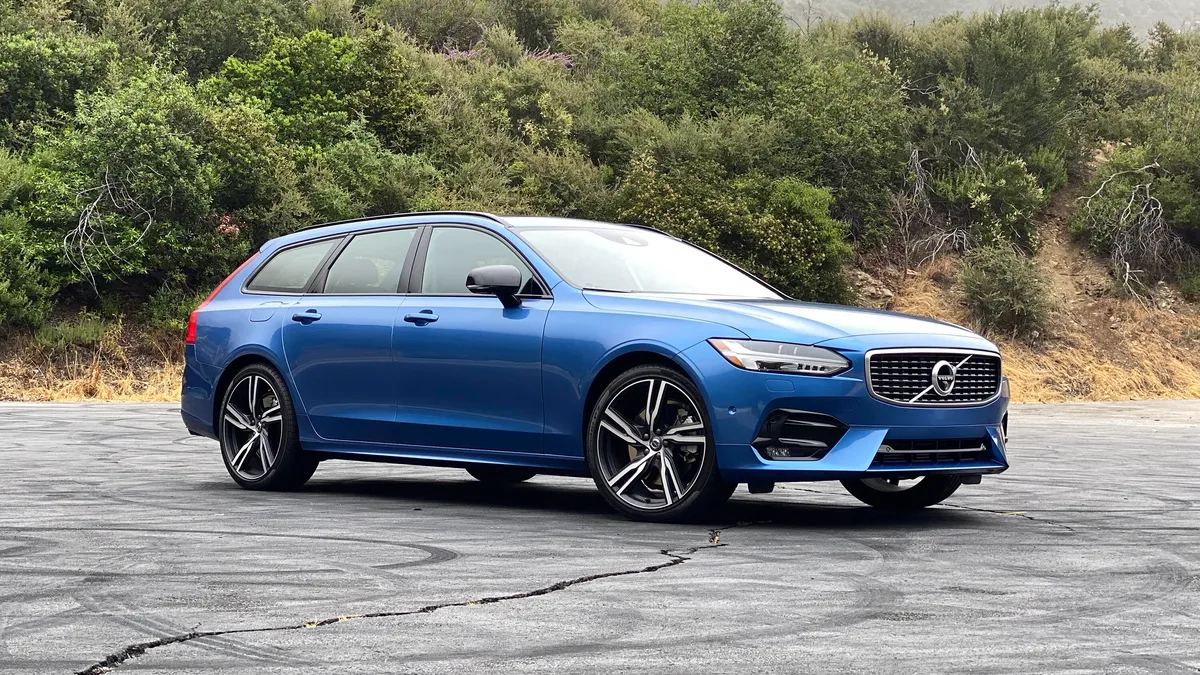
The company’s approach to keyless entry security incorporates advanced encryption protocols and sophisticated authentication methods that protect against electronic theft techniques.
Volvo’s system employs multiple security layers, including rolling code technology, time-sensitive authentication tokens, and proximity verification algorithms that prevent unauthorized access attempts.
The company’s commitment to security includes regular system updates and continuous monitoring of emerging electronic threats. Volvo’s integration of security systems with vehicle safety features creates a comprehensive protection platform that addresses both theft prevention and occupant safety concerns.
The system can detect attempted break-ins, monitor vehicle surroundings while parked, and provide emergency assistance if security events escalate into safety threats. This integration reflects Volvo’s holistic approach to vehicle protection and owner safety.
Physical security measures in Volvo vehicles include reinforced construction, advanced locking mechanisms, and tamper-evident components designed to delay unauthorized access and provide clear indication of breach attempts.
The company’s engineers integrate security features throughout the vehicle structure while maintaining the clean, functional design aesthetic that characterizes Volvo vehicles. This attention to both form and function ensures that security measures enhance rather than compromise the overall vehicle experience.
Volvo’s commitment to owner education and support extends to comprehensive security awareness programs that help owners understand available protection features and optimal usage practices.
The company provides detailed information about security system operation, threat awareness, and best practices for vehicle protection. This educational approach significantly enhances security effectiveness by ensuring owners can maximize their vehicle’s protection capabilities.
5 Brands With Zero Theft Prevention Focus
These traditional automotive brands continue producing vehicles with inadequate security systems that fail to address modern theft methodologies, leaving their customers vulnerable to increasingly sophisticated criminal operations.
Their reluctance to invest in advanced anti-theft technologies has resulted in disproportionately high theft rates and reduced owner confidence in vehicle security.
Six of the 10 most stolen cars in 2023 were Kia and Hyundai models that have a security vulnerability revealed by a TikTok trend that showed viewers how to steal certain models in seconds.
The security shortcomings in these brands stem from cost-cutting measures and failure to recognize the evolving threat landscape facing vehicle owners today.
Two Hyundai sedan models were the most stolen vehicles in 2024, followed by a Chevrolet pickup truck model, highlighting the consequences of inadequate security investment.
These manufacturers’ continued reliance on basic immobilizers and conventional alarm systems proves insufficient against organized theft operations that have adapted to exploit well-known vulnerabilities, making their vehicles attractive targets for criminals seeking easy opportunities.
1. Hyundai (Pre-2022 Models)
Hyundai’s security shortcomings, particularly in models manufactured before 2022, represent one of the most significant automotive security failures in recent history, resulting in unprecedented theft rates and widespread consumer safety concerns.
The Elantra wasn’t even on the radar in the 2010s and was not a common target for thefts during that time. With the Kia Boyz trend, the Elantra leapt to the top of most-stolen vehicle lists, highlighting the catastrophic impact of inadequate security measures on both consumers and the brand’s reputation.
The root of Hyundai’s security crisis lies in the company’s decision to omit engine immobilizers from many of their vehicles, a cost-cutting measure that left millions of cars vulnerable to theft using nothing more than basic tools available at any hardware store.
While engine immobilizers had been standard equipment on most vehicles for decades, Hyundai continued producing cars without this fundamental security feature well into the 2020s, prioritizing manufacturing cost savings over customer protection and vehicle security.
The absence of immobilizer technology in Hyundai vehicles means that thieves can bypass the ignition system using simple techniques that require no specialized knowledge or sophisticated equipment.
This vulnerability became widely known through social media platforms, where videos demonstrating theft methods spread rapidly, leading to an epidemic of Hyundai thefts across the United States. The ease of theft has made Hyundai vehicles attractive targets for both opportunistic criminals and organized theft operations.

Hyundai’s basic alarm systems, when present, provide minimal deterrent value and lack the sophistication necessary to effectively combat modern theft techniques.
These systems typically feature simple door and window sensors without comprehensive monitoring of ignition tampering, interior motion detection, or unauthorized key usage.
The limited scope of these alarm systems means that determined thieves can defeat them quickly and quietly, often without triggering any audible warnings.
The company’s approach to key security has historically relied on traditional mechanical systems without advanced encryption or electronic authentication protocols.
Standard Hyundai keys lack rolling code technology, proximity detection capabilities, or other security features that have become standard in the automotive industry.
This outdated approach to access control makes key duplication simple and does not protect modern electronic theft methods. Physical security measures in affected Hyundai models are similarly inadequate, with standard door locks, basic window glass, and minimal structural reinforcement against forced entry.
The company’s focus on cost reduction led to the elimination of security features that might delay unauthorized access or provide evidence of theft attempts. This lack of physical protection compounds the vulnerability created by absent electronic security measures.
The aftermath of Hyundai’s security failures has been devastating for vehicle owners, resulting in dramatically increased insurance premiums, difficulty obtaining coverage, and significant financial losses for those whose vehicles were stolen.
Many insurance companies have stopped providing coverage for certain Hyundai models or have imposed severe restrictions and higher premiums that make ownership economically challenging. The company’s response to these issues has been slow and inadequate, further damaging customer trust and brand reputation.
2. Kia (Pre-2022 Models)
Kia’s security deficiencies mirror those of its corporate sibling Hyundai, creating a dual crisis that has affected millions of vehicle owners and fundamentally altered the automotive theft landscape in the United States.
Most older Kia and Hyundai models lack engine immobilizers, but that’s changing, though this acknowledgment came only after years of elevated theft rates and significant consumer harm caused by the company’s inadequate security measures.
The systematic omission of engine immobilizers from Kia vehicles represents a conscious decision to prioritize short-term cost savings over long-term customer protection and brand integrity.
While competitors were standardizing advanced security features, Kia continued manufacturing vehicles with security systems that were obsolete by industry standards, leaving customers vulnerable to theft methods that more secure vehicles had rendered ineffective decades earlier.
Kia’s theft vulnerability became particularly notorious through social media exposure, where the simplicity of stealing these vehicles was demonstrated to millions of viewers worldwide.
The viral nature of these demonstrations created a perfect storm of widespread knowledge about theft methods combined with easily identifiable target vehicles, resulting in theft rates that far exceeded normal automotive crime statistics.
The company’s slow response to this crisis exacerbated the problem and demonstrated a concerning lack of urgency regarding customer safety.

The basic security systems installed in vulnerable Kia models provide minimal protection against determined thieves and lack the comprehensive monitoring capabilities necessary for effective theft prevention.
These systems typically feature outdated alarm technology, limited sensor coverage, and no integration with modern communication or tracking systems.
The inadequacy of these systems becomes apparent when compared to the sophisticated, multi-layered security approaches employed by security-conscious manufacturers.
Kia’s approach to vehicle access control has relied heavily on traditional mechanical systems that offer minimal protection against unauthorized access.
The company’s keys lack advanced encryption, rolling code technology, or proximity detection capabilities that have become standard security features throughout the automotive industry.
This outdated approach to access security makes key duplication simple and does not protect electronic theft methods or signal amplification attacks.
Physical security measures in affected Kia vehicles are similarly inadequate, with basic construction techniques that provide minimal resistance to forced entry attempts.
The company’s focus on cost reduction led to the elimination of security enhancements that might delay theft attempts or provide evidence for law enforcement investigations. This lack of physical protection creates multiple vulnerability points that thieves can exploit quickly and quietly.
The impact of Kia’s security failures extends beyond individual theft incidents to affect entire communities, where concentrations of vulnerable vehicles have created hotspots for automotive crime.
Insurance companies have responded by increasing premiums, restricting coverage, or refusing to provide policies for certain Kia models, making ownership economically challenging for many consumers.
The company’s delayed and inadequate response to these issues has further damaged customer trust and brand reputation in an increasingly security-conscious marketplace.
3. Mitsubishi
Mitsubishi’s approach to automotive security reflects a company that has consistently prioritized cost reduction and basic functionality over comprehensive theft prevention, resulting in vehicles that offer minimal protection against both opportunistic crimes and organized theft operations.
The company’s security systems have remained largely unchanged for years, failing to incorporate technological advances that have become standard throughout the automotive industry.
The foundation of Mitsubishi’s security inadequacy lies in its reliance on basic alarm systems that provide minimal deterrent value and lack the sophistication necessary to combat modern theft techniques.
These systems typically feature simple door and window sensors without comprehensive monitoring of critical vehicle systems, ignition tampering, or unauthorized access attempts.
The limited scope and outdated technology of these systems make them easy to defeat and provide little effective protection against determined thieves.
Mitsubishi’s engine immobilizer implementation, when present, utilizes outdated technology that lacks the advanced encryption and authentication protocols necessary to prevent sophisticated bypass techniques.
Many Mitsubishi models either lack immobilizers entirely or employ systems that use static codes or simple authentication methods that can be defeated with readily available equipment.
This inadequate approach to engine security leaves vehicles vulnerable to theft methods that more advanced systems have rendered obsolete.
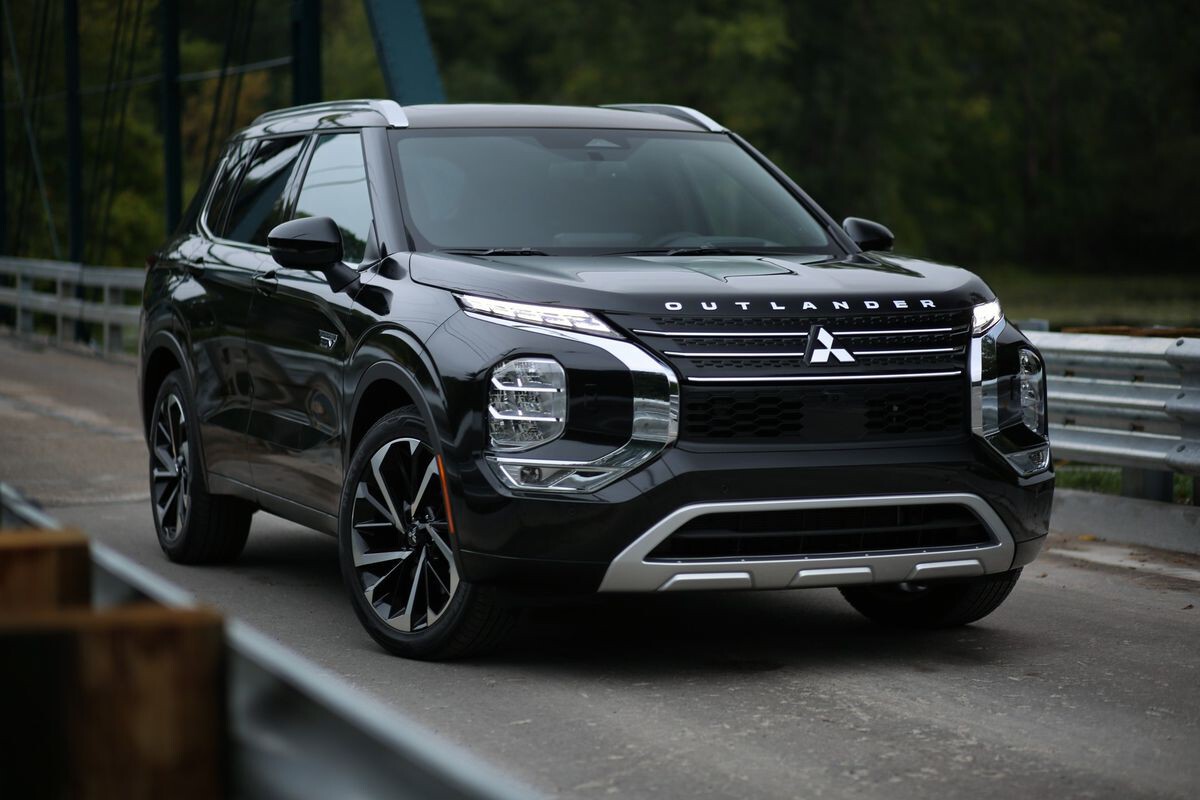
The company’s approach to key security demonstrates a concerning lack of attention to modern threats, with traditional mechanical keys and basic electronic systems that offer minimal protection against duplication or unauthorized access.
Mitsubishi keys typically lack rolling code technology, advanced encryption, or proximity detection capabilities that have become standard security features.
This outdated approach makes key duplication simple and provides no protection against electronic theft methods or signal amplification attacks that target more sophisticated keyless entry systems.
Physical security measures in Mitsubishi vehicles reflect the company’s basic approach to theft prevention, with standard construction techniques that provide minimal resistance to forced entry attempts.
Door locks, window glass, and structural components offer little more than cosmetic deterrent value against determined thieves equipped with basic tools. The absence of reinforced components, tamper-evident features, or delayed-access mechanisms makes unauthorized entry quick and quiet.
Mitsubishi’s lack of investment in connected vehicle technology means that their vehicles offer no remote monitoring, tracking, or recovery capabilities that have become increasingly important for theft prevention and vehicle recovery.
The absence of GPS tracking, cellular connectivity, or remote monitoring services leaves owners with no way to locate stolen vehicles or coordinate with law enforcement for recovery efforts. This technological gap significantly reduces recovery rates and increases the total loss exposure for both owners and insurance companies.
The company’s minimal approach to security extends to customer education and support, with limited information provided about available security features, optimal usage practices, or threat awareness.
This lack of owner education compounds the effectiveness problems with existing security systems by ensuring that even available protection measures are not utilized optimally. The result is a security posture that fails to address the full spectrum of threats facing vehicle owners in today’s complex crime environment.
4. Nissan (Select Models)
Nissan’s security approach varies significantly across its vehicle lineup, with some models receiving adequate protection while others, particularly in the economy segment, demonstrate concerning gaps in theft prevention capabilities that leave owners vulnerable to both opportunistic crimes and organized theft operations.
The company’s inconsistent approach to security implementation creates confusion among consumers and significant vulnerability variations within the brand portfolio.
The foundation of Nissan’s security inconsistency lies in its segmented approach to feature implementation, where advanced security measures are reserved for higher-end models while economy vehicles receive minimal protection.
This market-based approach to security allocation means that many Nissan owners, particularly those purchasing entry-level vehicles, receive inadequate protection against modern theft methods. The disparity in security levels across the model range creates significant vulnerability gaps that criminals can exploit.
Nissan’s engine immobilizer implementation varies dramatically across vehicle models and production years, with some vehicles lacking immobilizers entirely while others employ outdated systems that provide minimal effective protection.
The inconsistent application of this fundamental security technology means that many Nissan vehicles remain vulnerable to theft methods that proper immobilizer systems have rendered obsolete.
The company’s failure to standardize immobilizer technology across its lineup demonstrates a concerning lack of commitment to comprehensive customer protection.

The company’s alarm systems, when present, often utilize basic technology that lacks the sophistication necessary to effectively combat modern theft techniques. These systems typically feature limited sensor coverage, outdated detection algorithms, and minimal integration with other vehicle systems.
The inadequacy of these alarm systems becomes apparent when compared to the comprehensive monitoring capabilities offered by security-conscious manufacturers who integrate multiple detection methods and intelligent threat assessment.
Nissan’s approach to keyless entry security demonstrates significant inconsistency, with some models featuring advanced encryption and authentication protocols while others rely on basic systems that offer minimal protection against electronic theft methods.
The variation in key security across the model range creates confusion for consumers and provides criminals with easily identifiable targets that lack adequate protection. This inconsistent approach to access control security reflects broader problems with the company’s security philosophy and implementation.
Physical security measures in vulnerable Nissan models often rely on basic construction techniques that provide minimal resistance to forced entry attempts.
Door locks, window systems, and structural components in affected models offer little more than cosmetic deterrent value against determined thieves equipped with basic tools.
The absence of reinforced components, tamper-evident features, or delayed-access mechanisms in many models makes unauthorized entry straightforward and quick.
The company’s limited investment in connected vehicle technology means that many Nissan models lack remote monitoring, tracking, or recovery capabilities that have become increasingly important for comprehensive vehicle security.
The absence of GPS tracking, cellular connectivity, or professional monitoring services in many models leaves owners with no way to locate stolen vehicles or coordinate recovery efforts with law enforcement. This technological gap significantly impacts recovery rates and increases total loss exposure for affected owners.
5. Jeep (Select Models)
Jeep’s security challenges stem from the brand’s focus on rugged utility and off-road capability, often taking precedence over comprehensive theft prevention measures, resulting in vehicles that excel in challenging terrain but offer inadequate protection against criminal activity.
The company’s approach to security has historically emphasized functional durability over sophisticated protection systems, creating vulnerabilities that criminals can exploit both in urban and remote environments.
The foundation of Jeep’s security inadequacy lies in its prioritization of mechanical simplicity and field serviceability over advanced electronic protection systems.
While this approach serves the brand’s off-road heritage and utility focus, it creates significant gaps in theft prevention capabilities that leave vehicles vulnerable to both opportunistic crimes and organized theft operations.
The emphasis on basic, reliable systems often means that sophisticated security features are absent or implemented with minimal effectiveness. Jeep’s engine immobilizer implementation varies significantly across the model range, with some vehicles lacking immobilizers entirely while others employ basic systems that provide minimal effective protection against determined thieves.
The inconsistent application of immobilizer technology reflects the company’s fragmented approach to security implementation, where cost considerations and market positioning often override comprehensive customer protection. This inconsistency creates easily identifiable targets for criminals who understand which models lack adequate protection.
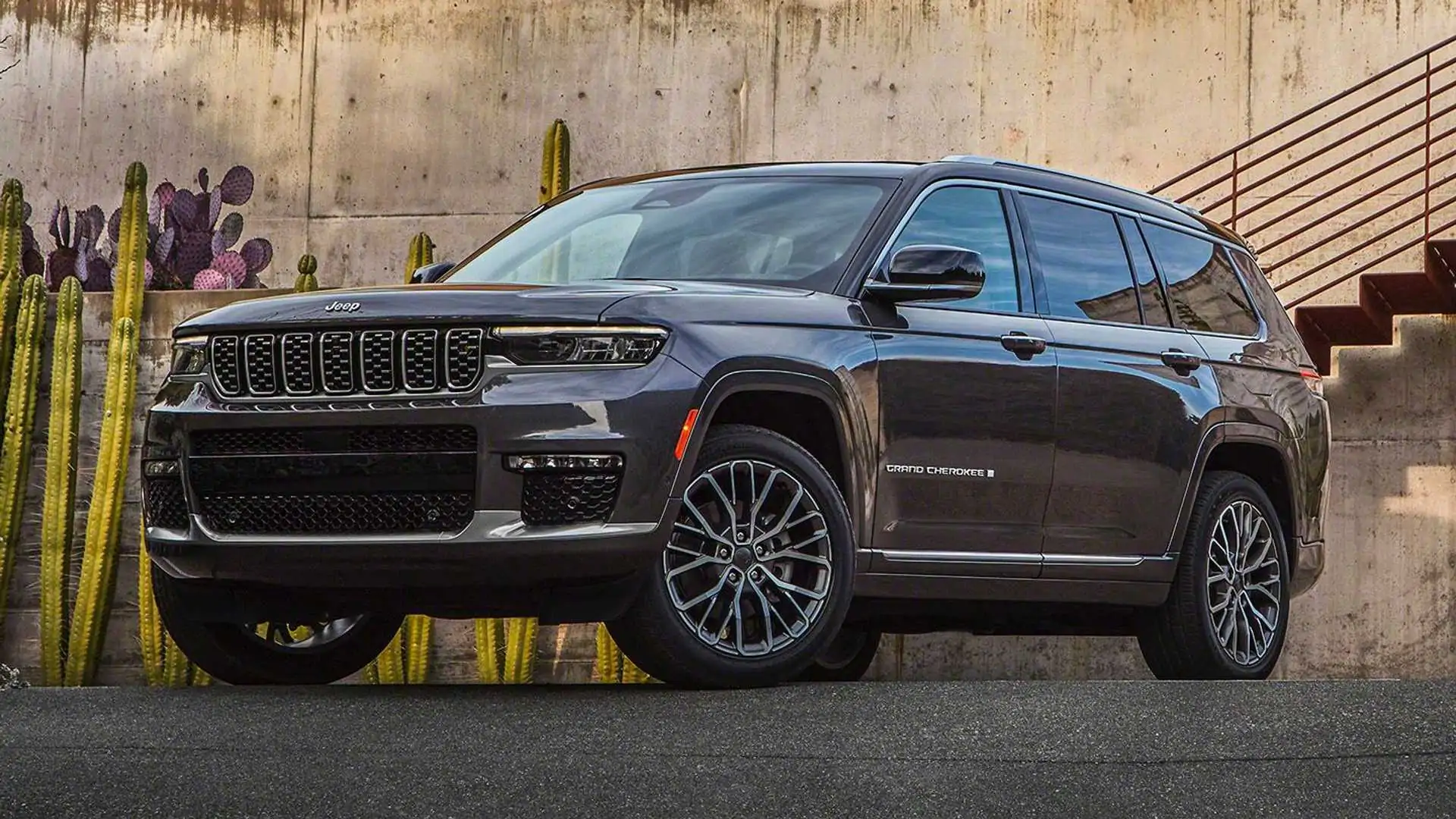
The company’s alarm systems, when present, typically utilize basic technology that lacks the sophistication necessary to combat modern theft techniques effectively.
These systems often feature limited sensor coverage, basic detection algorithms, and minimal integration with other vehicle systems. The focus on simple, reliable operation means that advanced features like intelligent threat assessment, graduated response protocols, or comprehensive system monitoring are typically absent from Jeep security implementations.
Jeep’s approach to physical security reflects the brand’s utilitarian philosophy, with emphasis on durability and repairability rather than theft resistance.
While this approach serves the needs of off-road enthusiasts and commercial users, it creates vulnerabilities that criminals can exploit. Door locks, window systems, and access points in many Jeep models offer minimal resistance to forced entry attempts, and the emphasis on field serviceability often means that security features can be easily bypassed using basic tools.
The company’s convertible and removable top models present unique security challenges that are inadequately addressed by current protection systems.
Soft tops, removable doors, and open-air configurations create multiple access points that traditional security systems cannot effectively monitor or protect.
The lack of comprehensive security solutions for these unique vehicle configurations leaves owners particularly vulnerable to theft and vandalism, especially in urban environments where such vehicles are frequently targeted.
Jeep’s limited investment in advanced connectivity and monitoring technology means that many models lack the remote tracking, monitoring, and recovery capabilities that have become increasingly important for comprehensive vehicle security.
The absence of GPS tracking, cellular connectivity, or professional monitoring services in many models reflects the company’s focus on basic functionality over advanced security features.
This technological gap significantly impacts theft recovery rates and increases total loss exposure for owners, particularly given the high value and desirability of many Jeep models in certain criminal markets.
Also Read: 5 Vehicles That Notify Police Automatically and 5 That Stay Silent

